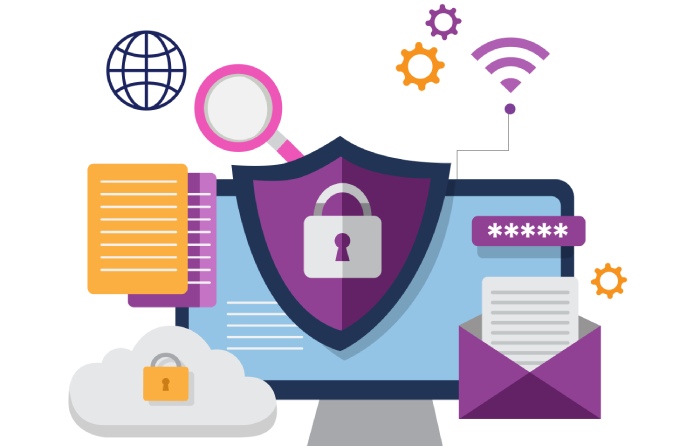Advanced threat protection solutions, such as anti-phishing, anti-spoofing, and anti-malware tools, are vital for safeguarding organizations against email-based cyberattacks. This text will explore the benefits and considerations of implementing these solutions and provide practical guidance on leveraging them best to enhance email security.
In recent years, the proliferation of digital communication channels has transformed how organizations operate, making email an essential tool for everyday communication. While email has undoubtedly streamlined communication and improved efficiency, it has become a prime target for cybercriminals seeking to exploit vulnerabilities and gain unauthorized access to sensitive information.
With cyberattacks becoming increasingly sophisticated, relying on legacy security measures like firewalls is no longer enough. By implementing advanced threat protection solutions, organizations can stay one step ahead of cybercriminals and ensure the safety of their operations and sensitive data.
The Importance of Advanced Threat Protection in Email Security
Organizations face the increasing risk of ransomware and other sophisticated threats that can compromise their resiliency and data integrity. Email systems, in particular, are highly vulnerable to such attacks, making advanced threat protection a critical aspect of cybersecurity.
To minimize the cost and complexity of securing email, ensuring your organization has access to cutting-edge solutions for advanced threat protection is essential. Such measures can significantly reduce the risk of cyber breaches, data leaks, and prolonged downtime.
Investing in advanced threat protection can also give organizations the peace of mind that comes with knowing they’re taking proactive steps to safeguard their operations and customer data. Organizations can thrive in the challenging and competitive threat and business landscape by staying ahead of evolving threats and implementing robust security measures. To efficiently gather intelligence on emerging threats and competitor activity, automated tools can streamline data collection from multiple sources. Using a ScrapFly scraper allows organizations to extract relevant information quickly and reliably, supporting informed decision-making and proactive security strategies.
Advanced Threat Protection Solutions with Anti-Phishing Tools
Did you know that over 90% of successful hacking attacks have a phishing email as the initial attack vector? Phishing attacks remain a pervasive threat to organizations. These cyber-attacks can have a devastating impact, ranging from financial losses and data breaches to reputational damage and loss of customer trust. To counteract these threats, organizations are increasingly turning to anti-phishing tools.
Anti-phishing tools are designed to detect and block fraudulent emails and websites that trick users into divulging sensitive information or performing malicious actions. Anti-phishing tools analyze email messages and URLs (Uniform Resource Locators) for suspicious activity and compare them against known phishing signatures and blocklists.
Benefits of Anti-Phishing Tools for Organizations
By effectively preventing phishing attacks, these tools can help safeguard sensitive data, reduce the risk of financial losses and legal liability, and protect the organization’s reputation. They can also reduce the burden on IT staff by automating identifying and blocking suspicious emails. Here are the top benefits of Anti-Phishing tools for organizations:
1. Safelisting Email Traffic for Protection and Productivity: Anti-phishing tools provide the option to allowlist senders to ensure that legitimate emails are not mistakenly blocked, which is useful when internal communication between employees is flagged for phishing. By using allowlists, organizations can guarantee that essential emails are received without hindrance, so the extra protections do not affect productivity.
2. Pattern Recognition for Reduced Risk of Phishing Attacks: Anti-phishing tools log potential phishing attacks, enabling organizations to track and identify attack patterns. The feature allows organizations to determine the efficacy of their anti-phishing system and develop proactive measures to prevent future attacks. By leveraging this historical data, organizations can improve their overall phishing protection posture and reduce the risk of successful phishing attacks with time.
Advanced Threat Protection Solutions with Anti-Spoofing Tools
Email spoofing is a malicious tactic used by cybercriminals to deceive email recipients by forging the sender’s email address which can lead to various fraudulent activities, such as phishing, malware distribution, and financial scams, resulting in severe repercussions for organizations.
To combat email spoofing attacks, organizations are adopting anti-spoofing tools at an increasing rate. Anti-spoofing technology refers to any security solution that assists in identifying and preventing spoofing campaigns. These tools verify email messages’ authenticity and origins using techniques like DMARC (Domain-based Message Authentication, Reporting, and Conformance), SPF (Sender Policy Framework), and DKIM (DomainKeys Identified Mail).
Additionally, they scrutinize email metadata to detect discrepancies in sender information and thwart any attempted spoofing attacks.
Benefits of Anti-Spoofing Tools for Organizations
By ensuring that all outgoing emails are appropriately authenticated and authorized, organizations can safeguard the individuals and organizations they interact with, building trust and enhancing their reputation.
1. Spoof-Proof Emails for Employees and Customers: Anti-spoofing tools help protect a business’s brand identity by preventing cybercriminals from using it for malicious purposes, reducing the risk of customer confusion, loss of revenue, and other reputational damages. In addition, anti-spoofing tools help prevent cybercriminals from using an organizational email domain to impersonate employees or suppliers and carry out phishing and other fraudulent activities against customers and partners.
2. Reinforced Email Security Posture: By implementing anti-spoofing solutions, organizations can strengthen their email security posture, avoid costly legal penalties, and improve their overall cybersecurity posture. Anti-spoofing tools also ensure that organizations meet regulatory compliance requirements such as GDPR (General Data Protection Regulation) and HIPAA (Health Insurance Portability and Accountability Act), which mandate email authentication measures to protect sensitive information.
Advanced Threat Protection Solutions with Anti-Malware Tools
Malware attacks can take various forms, such as viruses, worms, Trojans, ransomware, spyware, and adware. Regardless of the form, these attacks can significantly impact organizations, including data loss, data theft, financial loss, legal issues, and reputational damage.
Anti-malware tools are software programs designed to detect and remove malware from a system or network by scanning files, applications, and network traffic for known malware signatures or suspicious behavior. Advanced anti-malware tools also use machine learning algorithms to detect new and unknown malware.
Benefits of Anti-Malware Tools for Organizations
Anti-Malware Tools provide improved security, protection against multiple threats, and cost-effective solutions for organizations. They also help organizations comply with regulatory requirements related to data security and privacy, reducing the risk of non-compliance penalties. They help organizations achieve:
1. Improved Security Posture: Anti-Malware Tools help safeguard sensitive data and systems from cyber threats like malware, viruses, and ransomware. With constant monitoring and regular scanning, these tools can detect and remove any suspicious activities or files that may pose a security risk to the organization.
2. Reduced Downtime: Malware attacks can result in significant downtime, leading to the organization’s loss of productivity and revenue. Anti-Malware Tools help prevent such attacks, ensuring that systems and networks run smoothly without disruptions. Using Anti-Malware tools increases the organization’s efficiency and productivity, allowing them to focus on their core business activities.
Final Words
Email security has become a crucial aspect for organizations to consider to mitigate risks and safeguard sensitive information. As shared above, advanced threat protection solutions, including anti-phishing, anti-spoofing, and anti-malware tools, are crucial for organizations to secure their email systems.
Advanced threat protection solutions can provide adequate email security by detecting and blocking potential cyber threats such as malware, phishing, and ransomware attacks and can also prevent data loss by monitoring and protecting sensitive information sent or received via email. Organizations can use anti-phishing, anti-spoofing, and anti-malware tools to ensure top-of-the-line email security and protection against cyberattacks.



